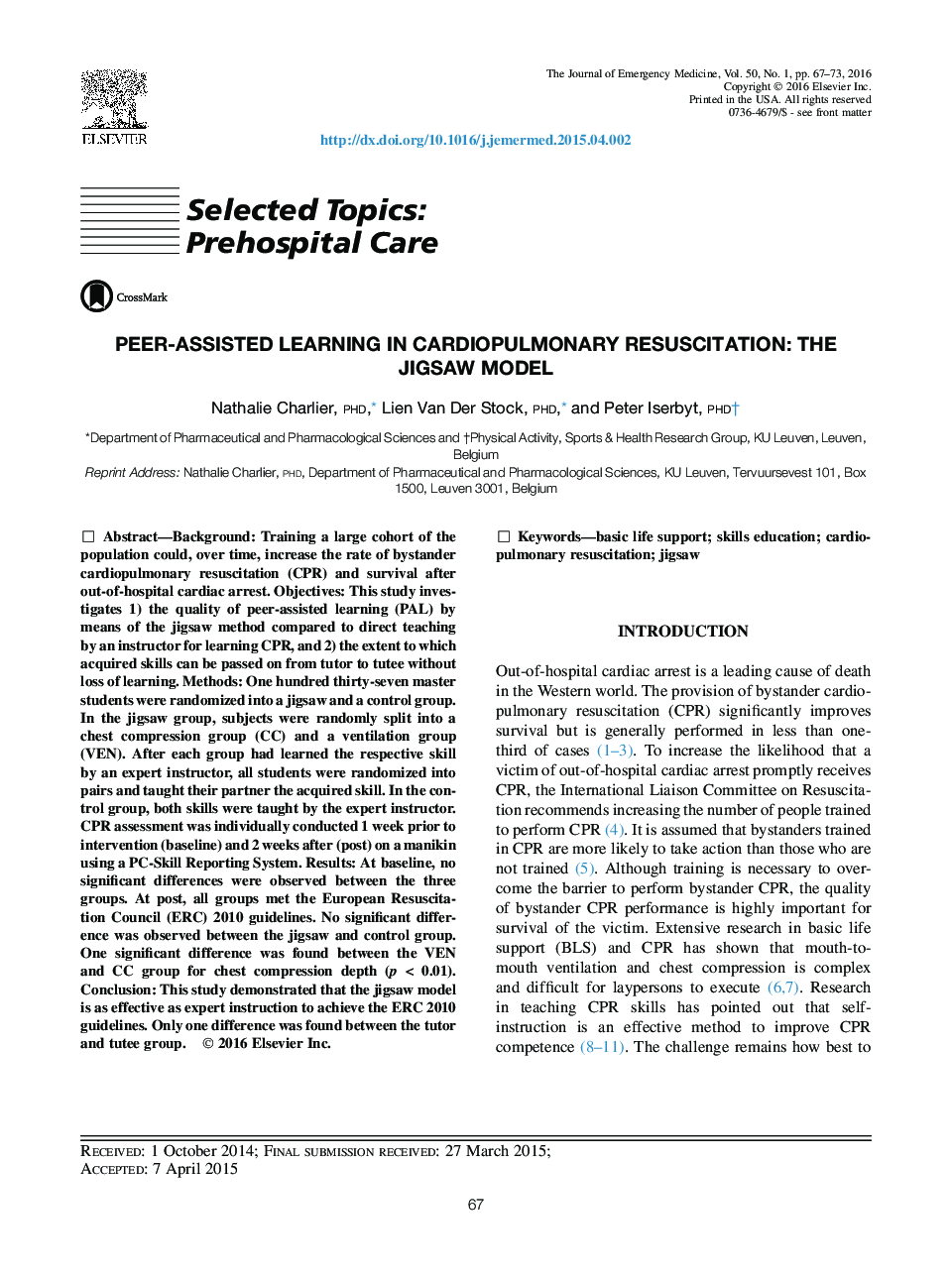| Article ID | Journal | Published Year | Pages | File Type |
|---|---|---|---|---|
| 6085026 | The Journal of Emergency Medicine | 2016 | 7 Pages |
BackgroundTraining a large cohort of the population could, over time, increase the rate of bystander cardiopulmonary resuscitation (CPR) and survival after out-of-hospital cardiac arrest.ObjectivesThis study investigates 1) the quality of peer-assisted learning (PAL) by means of the jigsaw method compared to direct teaching by an instructor for learning CPR, and 2) the extent to which acquired skills can be passed on from tutor to tutee without loss of learning.MethodsOne hundred thirty-seven master students were randomized into a jigsaw and a control group. In the jigsaw group, subjects were randomly split into a chest compression group (CC) and a ventilation group (VEN). After each group had learned the respective skill by an expert instructor, all students were randomized into pairs and taught their partner the acquired skill. In the control group, both skills were taught by the expert instructor. CPR assessment was individually conducted 1 week prior to intervention (baseline) and 2 weeks after (post) on a manikin using a PC-Skill Reporting System.ResultsAt baseline, no significant differences were observed between the three groups. At post, all groups met the European Resuscitation Council (ERC) 2010 guidelines. No significant difference was observed between the jigsaw and control group. One significant difference was found between the VEN and CC group for chest compression depth (p < 0.01).ConclusionThis study demonstrated that the jigsaw model is as effective as expert instruction to achieve the ERC 2010 guidelines. Only one difference was found between the tutor and tutee group.
